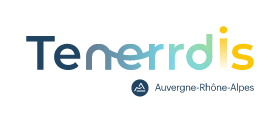Reflex
Develop materials, electrotechnical systems, and dedicated management and supervision applications to facilitate the integration of intermittent, locally-generated electricity from renewable sources into the grid.
Challenges
Connecting PV- and wind-generated electricity to the grid creates a host of new problems for grid operators. Managing voltage and ensuring proper operation of safety devices are just two of the issues that must be dealt with. The Reflex project, launched in 2006, set out to come up with solutions for the smart grid, a market estimated to reach $73 billion by 2020. The latest advances in information and communication technologies have made the smart grid a reality, with innovative new capabilities to ensure increased uptime, enhanced performance, and higher profits:
- Enhanced measurement and command capabilities for more flexible grid operation
- Optimized electricity production and consumption to more effectively match supply and demand over time and across specific geographical areas
- Better operating safety that takes into account the unique problems associated with PV and wind energy
The R&D carried out over the course of the project led to several innovative new grid management, supervision, and safety products that offer a high level of service quality while optimizing both CapEx and OpEx.
RESULTS:
The project resulted in the development of three products to improve the performance of electricity grids integrating local renewable-based production:
- The Sepam 40 and Flair 200c grid safety devices offer faultdetection and location capabilities that improve grid management
- A supervision system for PV plants hooked up to the grid; the system leverages the Array Box, the first new product to come out of the Reflex project in 2008, and provides information on the amount and quality of electricity being fed into the grid as well as on the performance of each piece of PV equipment
New features were developed for the grid management software used at the energy distributors’ control centers:
- Optimized grid configuration
- Voltage adjustment
- Load and voltage estimation across the entire grid
GROWTH
From 2008 to 2010 Schneider Electric subsidiary Telecontrol boosted its revenue by 20% on increasing numbers of PV installations hooked up to the grid and the Array Box. Other products and software developed during the project are currently being used in life-sized smart-grid demonstrators like GreenLys and Millener.
OUTLook
The project positioned Schneider Electric to round out its product lineup in the runup to ERDF, France’s main electric utility infrastructure provider, equipping the nation’s grid in 2016–2017. And export sales prospects are particularly promising: Schneider Electric has already won a $12 million project north of Delhi; the port of Rotterdam in the Netherlands is planning to roll out a pilot self-healing network; and additional opportunities have been identified in Morocco, Jordan, and Spain. The project also enabled the partners, especially G2Elab, to solidly anchor their international reputations in fields like grid automation systems and renewable-energy-to-grid connection.






